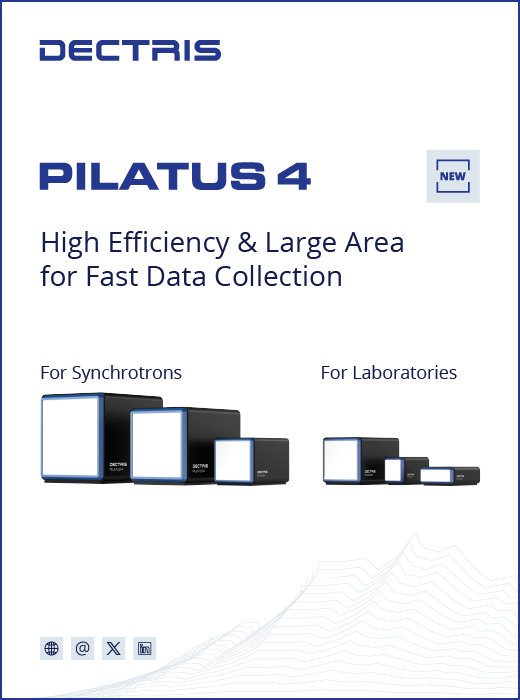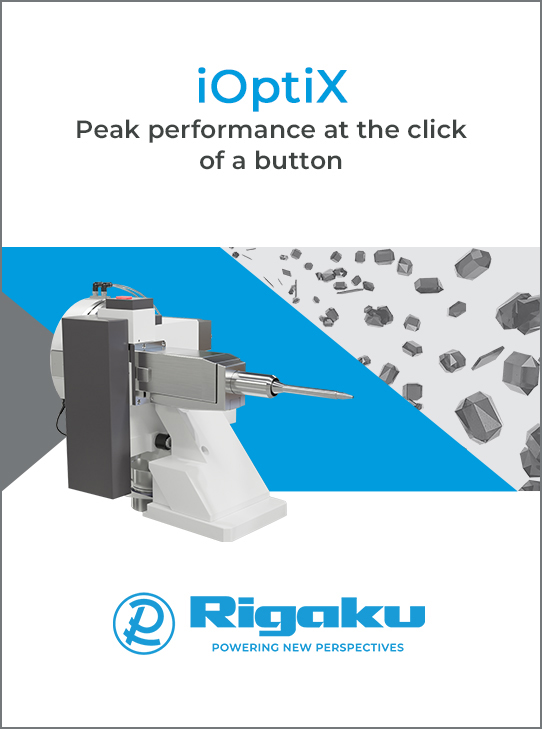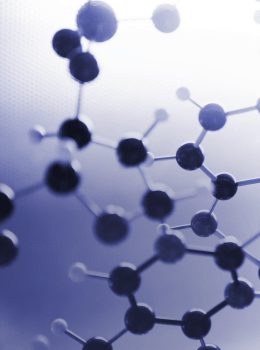
IUCr Congress
Crystal-a-con at IUCr2023
![thumbnail [thumbnail]](https://www.iucr.org/__data/assets/image/0008/157787/thumbnail.jpg)
Bragg Your Pattern competition winners' art was displayed on our Giant Buckyball. Photo of the buckyball: S. R. Batten.
How many times in your career have the world’s crystallographers gathered in your town (or even your country when you are in the Southern Hemisphere)? From the point that the SCANZ team won the bid to hold the 26th IUCr Congress in Melbourne, we realised that this was truly a once-in-a-lifetime opportunity to push communication of crystallography beyond the Brillouin zone. And so, the Bragg Your Pattern project (https://braggyourpattern.com) was formed!
![[photo1]](https://www.iucr.org/__data/assets/image/0009/157788/photo1.jpg)
In Australia and New Zealand, there is a big emphasis on developing science, technology, engineering and mathematics (STEM) resources for students in high schools (aged 11 and above) but less on those younger. The Bragg Your Pattern team realised that, through patterns and symmetry and its very visual nature, crystallography is an ideal topic to target with a younger audience. We started the project in 2022 with a national pattern competition, where students were encouraged to ‘make’ or ‘see’ a pattern and send the image to us. Those who made it to IUCr2023 would have seen these images on our Giant Buckyball during the conference.
But the pattern competition was just our warm-up, with the big event planned for 2023 – a pop-up crystallographic science festival held right within the conference venue! We brought together crystallographic-inspired exhibits, but our big draw was the inclusion of seven interactive activities. The event – ‘Crystal-a-con’ – was marketed to schools and members of the public and held on Friday and Saturday during the congress. Each of the interactive activities was named after a crystal system, and each visitor was given a passport so that they could collect stamps from each one.
![[photo2]](https://www.iucr.org/__data/assets/image/0010/157789/photo2.jpg)
Our Cubic activity was perhaps our headline activity, and certainly the one that attracted many IUCr delegates – trying to break the world record for the largest crystal structure model! The previous record (https://guinnessworldrecords.com/world-records/109929-largest-sodium-chloride-molecular-structure-model) was for a model of sodium chloride (common table salt), which contained 38,880 individual ‘atoms’ (though it has since been expanded to 42,875 atoms, https://worldrecord.r-krickl.com/en/, https://www.facebook.com/worldrecordcrystalmodel).
In the weeks before the conference started, a number of smaller parts of the overall model were built by staff at the Australian Synchrotron. These pre-built parts were taken to the conference venue and assembled and added to by conference delegates over the first five days of the conference. School groups and members of the public who attended Crystal-a-con also helped build the big model.
![[photo3]](https://www.iucr.org/__data/assets/image/0011/157790/photo3.png)
The statistics of the final assembled model were impressive: 62,356 atoms were connected by 121,547 bonds (i.e. 183,903 individual components that had to be connected together), total weight 341 kg, total volume 4.47 m3. The dimensions were 3.69 m along the bottom triangular edges, 2.31 m along the top triangular edges, and 1.11 m in height.
![[photo4]](https://www.iucr.org/__data/assets/image/0003/157791/photo4.jpg)
Our Hexagonal activity was on the sweet side! Sweets and crystals are both amazing individually but together they are the best! Participants in the hexagonal activity built their own crystal structure models out of jubes (Australian jelly sweets) and toothpicks, using over 25 kg of lollies and 10,000 toothpicks. Starting with a simple cubic crystal structure, it was quickly apparent that this model was quite brittle and weak. Adding another lolly to make a body-centred cubic structure made a much stronger assembly. Enthusiastic kids continued on to make extended body-centred cubic and hexagonal structures.
This activity was an excellent conversation starter to talk about everyday crystals such as salt and sugar and how they are similar to and different from crystals like diamonds and rubies. The different ways the same building blocks (jubes and toothpicks) could be constructed to make stronger or weaker assemblies could be directly related to the difference between diamonds and graphite.
Many kids worked together to combine their ‘unit cells’ to make larger and larger lolly ‘crystallites’, even making them colour-coordinated. This activity was very popular, although that may have been because they could eat their lollies after they finished building!
Celebrating the patterns of the world was the theme for the Trigonal activity, which brought together a range of patterns from different cultures and explored the maths behind them (with Dr Katherine Seaton). Not only were participants able to create their own inspired patterns, but we also got them thinking “When is a pattern not a pattern?” by introducing the ‘Einstein’ shape that had taken the news by storm a few months previously. Visitors were also encouraged to vote if they thought the shape most resembled a hat or a shirt! As you can see in the picture, the shirt won!
![[photo5]](https://www.iucr.org/__data/assets/image/0004/157792/photo5.jpg)
Our Orthorhombic and Tetrahedral activities were run by some fantastic partners. The CCDC brought their ‘Crystal detectives’
(https://www.ccdc.cam.ac.uk/community/education-and-outreach/outreach/home-learning-activities/identikit-of-common-substances/) activity that they had run at a number of science festivals. The Australian audience had a great time identifying common substances from crystal structures; through the link, anyone can try this at home too. Added to this, ANSTO – custodians of the central facilities in Australia – dispatched a team from their Discovery Centre to run a diffraction demonstrating activity with lasers on the Friday, while the Saturday theme revolved around the periodic table.
In the Monoclinic activity, the Crystal-a-con participants had the opportunity to build their own virus model out of paper! Thanks to the RCSB Protein Data Bank, we had a very nice template that could be easily punched out of a piece of card and folded up to make a Zika virus model. For those participants wanting more of a challenge, Protein Data Bank Japan provided instructions and paper to fold an origami virus, and Dr Daniel Eriksson was on hand to help people fold an icosahedral virus from a single piece of paper. The Protein Data Bank in Europe was also involved and provided beautiful images from their 2023 PDB art calendar to display.
Our Triclinic or ‘Meet the Crystallographer’ station allowed us to make the most of the amazing crystallographers who had travelled from the other side of the world to attend IUCr2023. We had 12 crystallographers volunteer to share their work with our participants over the 1.5 days. These crystallographers came from countries across the globe, including the UK, Uruguay, Germany, Canada and, of course, Australia. The Crystal-a-con participants were amazed to hear about all the fascinating work the crystallographers do and were excited to take home Professor Jennifer Martin’s My Aunt is a Protein Crystal Scientist book and goodies from the Diamond Synchrotron.
![[photo6]](https://www.iucr.org/__data/assets/image/0005/157793/photo6.png)
Along with the interactive activities, we gathered together a number of additional exhibits, from crystallographic-inspired fashion (thanks to Dr Irene Suarez-Martinez with her Stem and Needles project, https://stemandneedles.com/) to giant crystal structures that had first been commissioned for the International Year of Crystallography in 2014. Overall we created a pop-up science museum!
![[photo7]](https://www.iucr.org/__data/assets/image/0006/157794/photo7.jpg)
As the icing on the cake, we organized a public lecture by Professor Jenny Martin, who shared why she loves crystallography. The lecture touched on Australia's strong connection to this wonderful science, the incredible women who work in the field, and the amazing scientific advances our community has enabled through sharing resources and knowledge.
![[photo8]](https://www.iucr.org/__data/assets/image/0007/157795/photo8.jpg)
A big thanks goes to all who helped to make the event the success it was: our IUCr volunteers (sporting their red Bragg T-shirts), the synchrotron staff who tirelessly made the diamond model and were invaluable in the logistics, and the conference organisers who supported the whole endeavour. Thanks also to all the IUCr delegates who stopped by and put some carbon atoms together; the event was truly community-supported.
Overall, our Crystal-a-con event was visited by 480 school kids, teachers and their families, giving them a great insight into the importance of crystallography and what life looks like on the atomic scale.
What are our next steps? Our giant diamond model is now destined to be broken down into individual kits and will be donated, along with a supporting booklet, to more than 1000 primary schools all over Australia and New Zealand to inspire the next generation of scientists and crystallographers. Particular emphasis will be given to remote, rural, regional and low-economic-opportunity schools, which are typically under-resourced in the area of STEM and/or have limited access due to their distance from other STEM-supporting outreach programmes. Hopefully, this, and the fact that we now have a toolkit of activities to run around the country, will mean a long public outreach legacy for the IUCr2023 meeting.
Copyright © - All Rights Reserved - International Union of Crystallography








